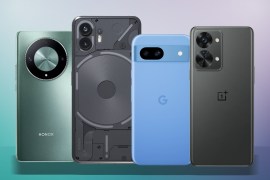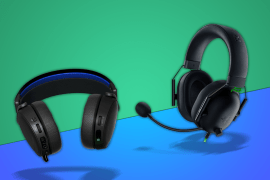Nothing Ear (a) review: hello yellow
Colourful, cut-price take on Nothing's usual formula goes one better in a few key areas
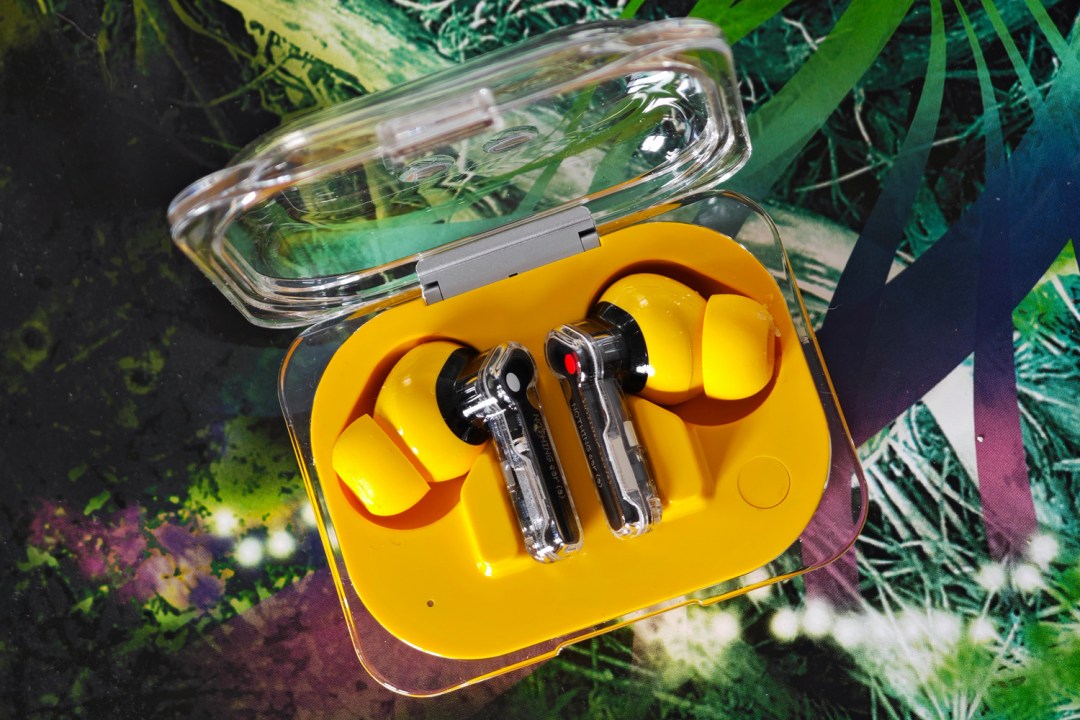
Stuff Verdict
Takes the best bits of Nothing’s already affordable wireless earbuds and slashes the price even further. If you don’t need all the bells and whistles, Ear (a) is an absolute steal.
Pros
- Very capable ANC and engaging audio
- New twist on Nothing’s distinctive design
- Consistently decent battery life
Cons
- Missing advanced EQ settings
- No wireless charging
Introduction
It was inevitable, really. Once Nothing introduced a second, more affordable model to its smartphone range, a matching pair of wireless earbuds couldn’t be far behind. Ear (a) takes most of what made the firm’s previous audio efforts such great value, ekes out a bit more battery life, and mixes up the styling just enough to feel fresh.
A few features haven’t made the grade, in order to give the also-new Nothing Ear a bit of breathing room in what is already a very competitive end of the headphone market. But with sub-brand CMF already offering similar specs for half the price, is Nothing just competing with itself at both ends of the price spectrum?
After a week of testing, I’m happy to report the differences are more than skin deep – although styling absolutely plays a part too.
How we test headphones
Every pair of earphones and headphones reviewed on Stuff is used for a minimum of a week’s worth of daily listening. We use a playlist of test tracks made up of multiple genres to assess sound, and use our years of experience to compare to other models. Manufacturers have no visibility on reviews before they appear online, and we never accept payment to feature products.
Find out more about how we test and rate products.
Design & build: best case scenario
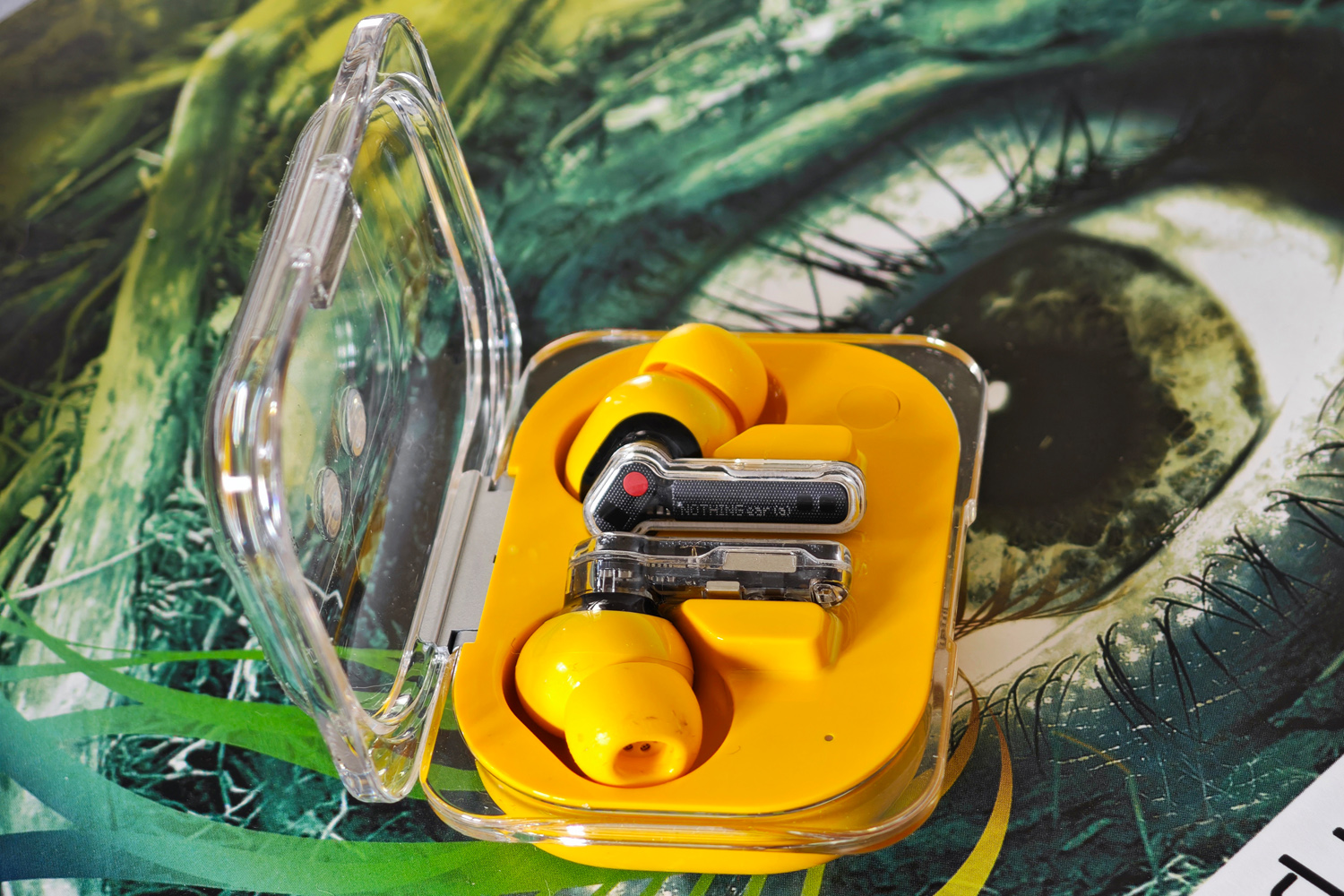
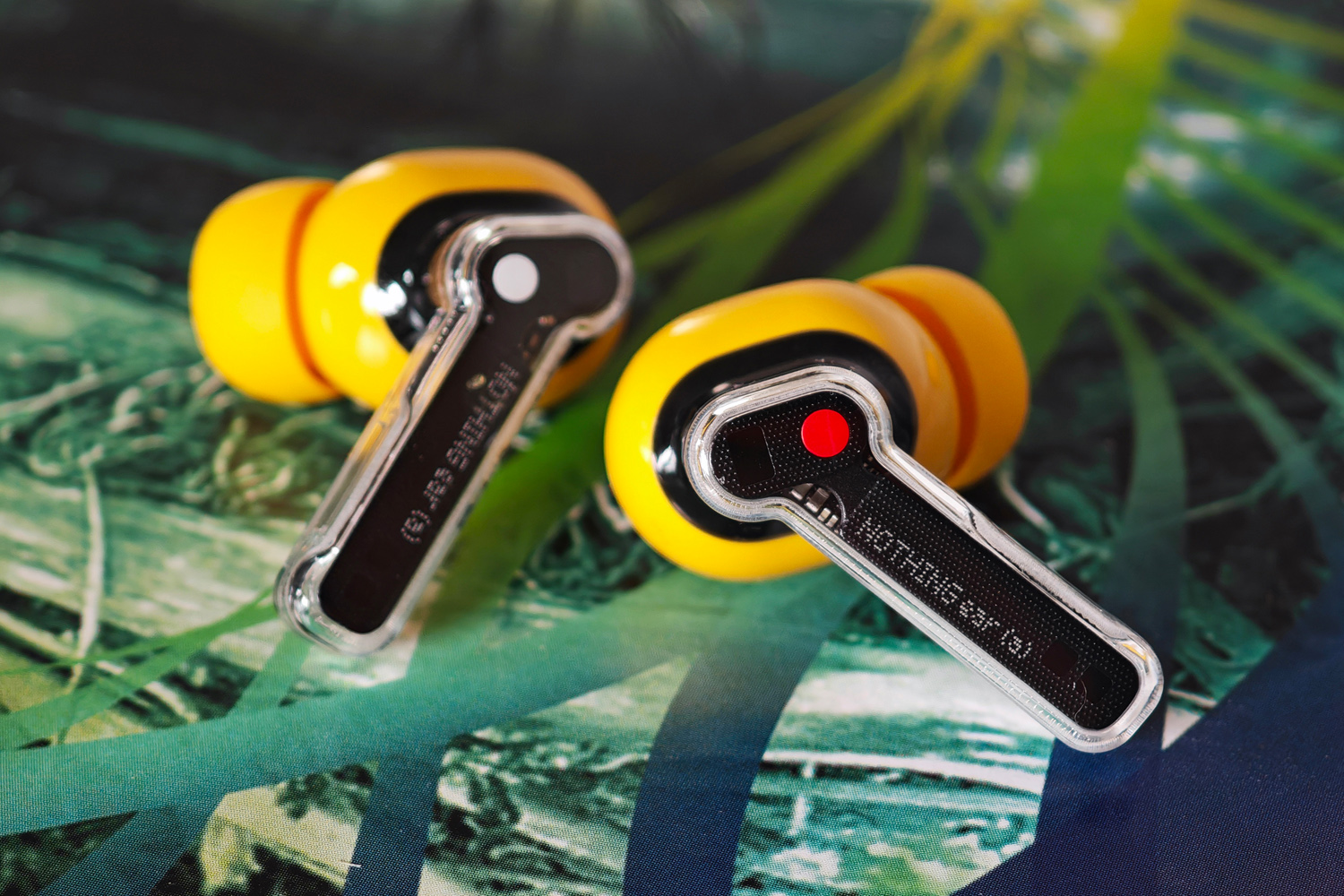
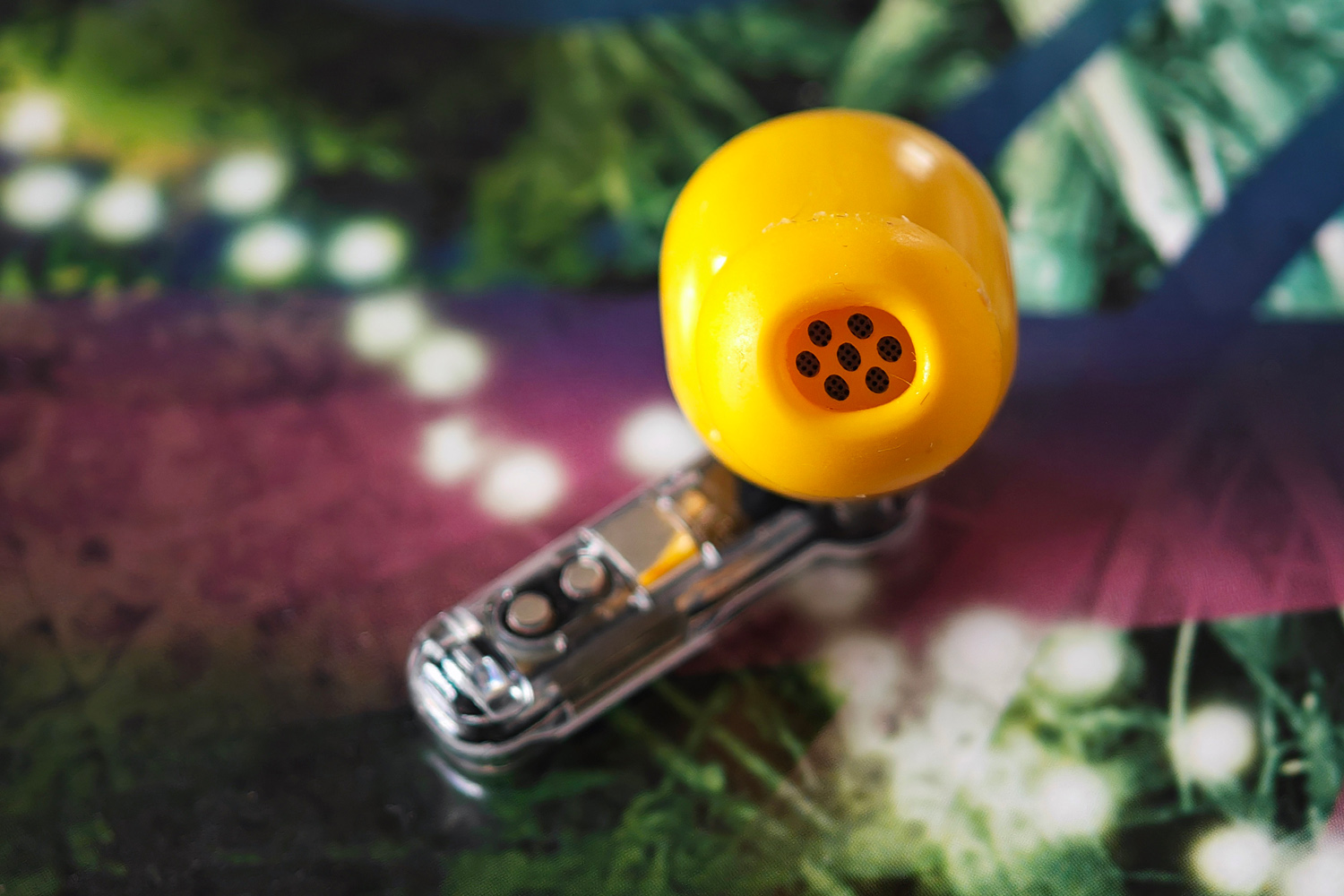
Look at the buds by themselves and you’d be hard pressed to spot the difference between Ear (a) and its bigger brother. Nothing’s see-through stems and bulbous driver housings have been carried across practically unchanged, with the internal components appearing in largely the same places.
The big change is the new yellow colourway; it’s the first time Nothing has added colour to any of its mainline products, and is a proper head-turner. Even the bundled silicone ear tips are colour-matched. You’re not going to lose sight of one of these if they drop on the ground. Of course Nothing’s familiar black and white options make an appearance too.
I found the fit to be just as comfortable as Nothing’s previous efforts, once I’d found the right sized tips for each ear. With a good seal there’s a respectable level of passive noise isolation, and the buds wouldn’t move about while I was walking or even jogging.
It’s the case where Nothing’s design team has been allowed more freedom. Instead of a square clamshell, Ear (a) gets rectangular one, made from a blend of opaque and transparent plastics. I found the longer, thinner shape sat more comfortably in my pocket, and personally think it’s easier on the eyes too, although the glossy finish on the bottom part doesn’t feel as nice as the matte one on the more expensive model. It’s obviously a Nothing product, compared to the rather generic-looking CMF Buds Pro.
The plastics have held up well after a week of testing, though it’ll take a lot more time to see if it avoids scuffs as well as the now-retired Ear 2 does – or picks them up as quickly as Ear 1 did. IPX2 resistance is pretty minimal, meaning you won’t want to get it out in a heavy storm. The buds are more hard-wearing at IP54, so will cope just fine with gym sweat and sudden rain showers.
Features & battery: long lifer
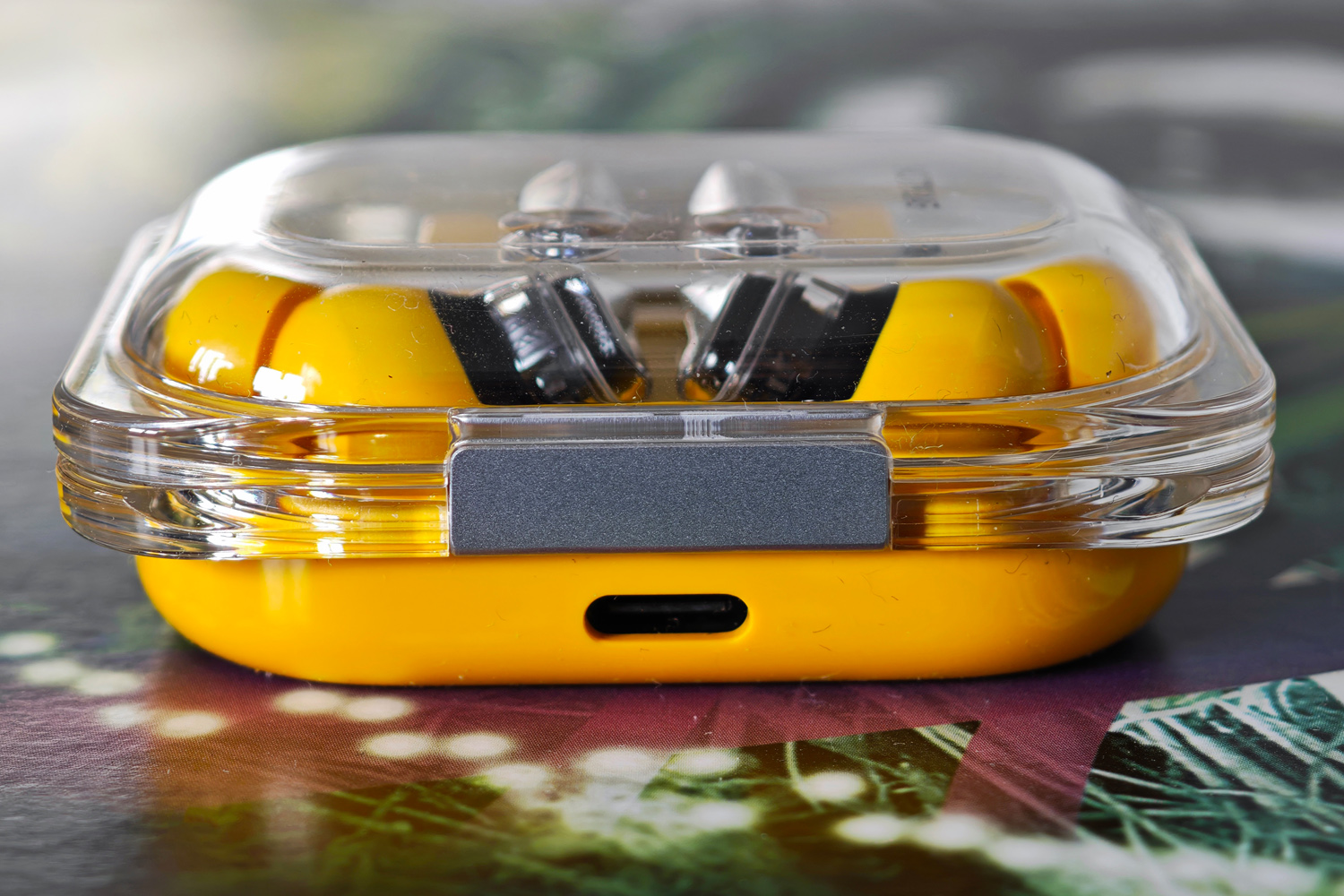
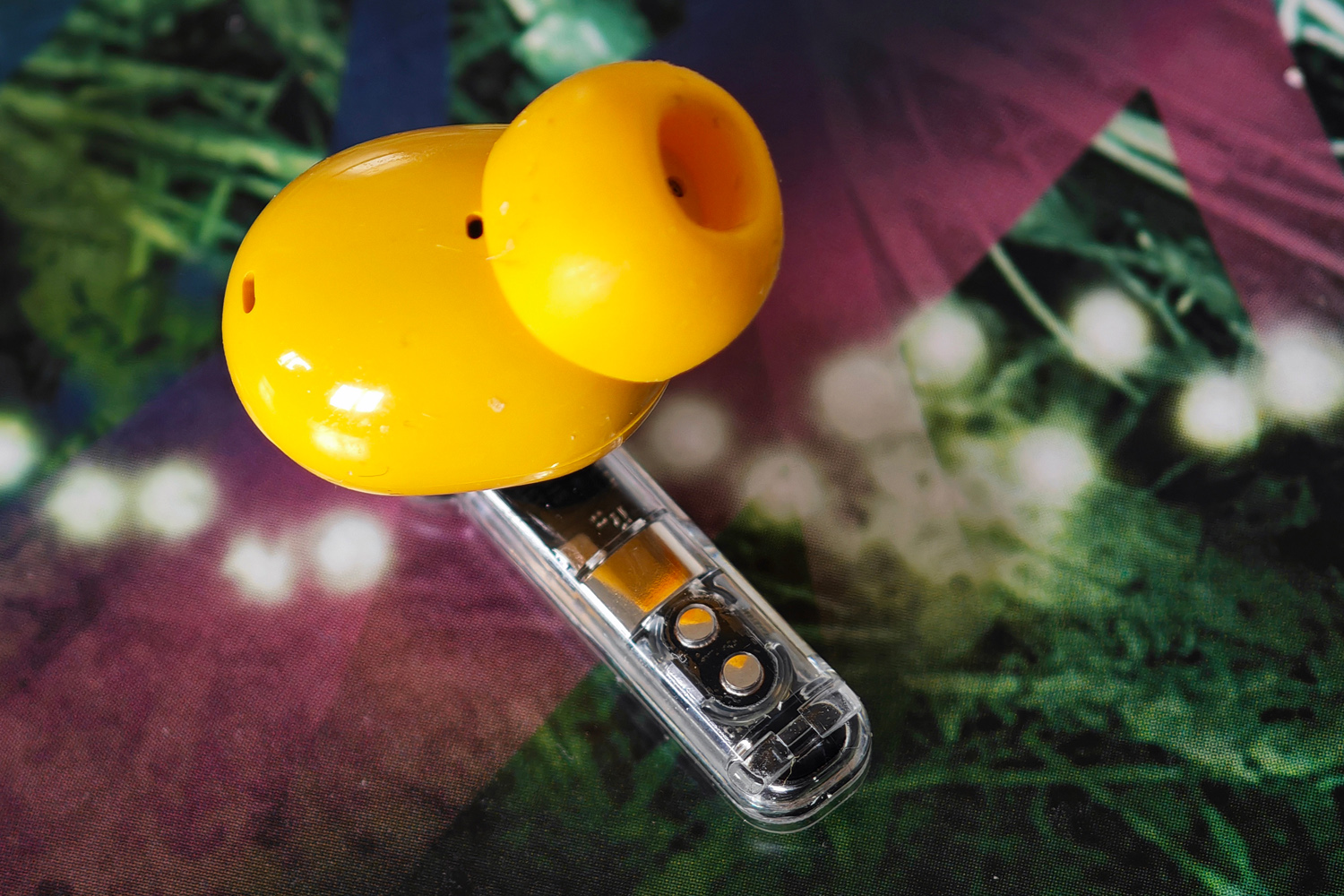
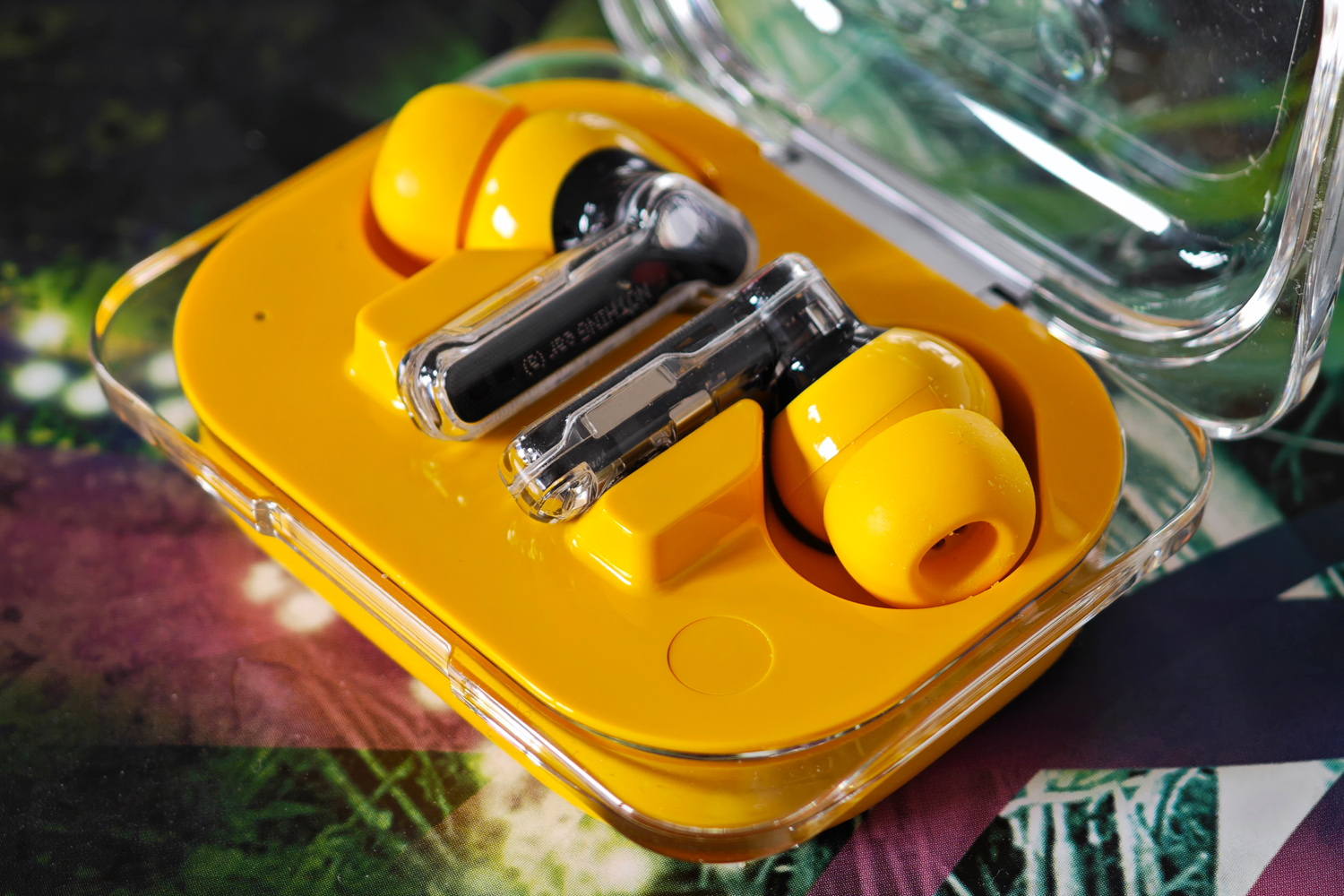
Fair play to Nothing, there’s very little to separate Ear (a) from the pricier Ear on the features front. That includes pinch controls, which entirely avoided the accidental track skips and pauses I’ve experienced with tap controls on rival earbuds.
I thought Ear (a)’s in-ear detection was actually better than the Ear’s, which for some reason would regularly decide an earbud had been removed, and pausing my music. That didn’t happen here, so I was happy to leave the feature switched on.
It’s great to see Nothing adopt the LDAC high quality Bluetooth codec, giving Ear (a) the edge over cheap in-ears that rely on basic SBC and AAC. You forego LHDC by buying this model instead of the Ear, but seeing how that Bluetooth codec isn’t as popular as LDAC, I think it’s only worth spending the extra if your device supports it – and you care enough about sound quality to activate it.
That’s also the case when it comes to wireless charging. You don’t get any here, but unless your phone has wireless powershare – and you regularly use it to top up your smaller gadgets while on the move – you won’t miss it.
Battery life is decent, rather than class-leading, managing a bit over five hours with ANC enabled and nine with it switched off. That’s actually better than the more expensive Ear, but only by 20 minutes or so. When I turned off noise cancelling, I saw north of nine hours, which is really rather good. With a few trips to the charging case, total listening time is closer to 24 hours with ANC on, so more than enough to get through a long-haul flight, or 42 hours with it off. The Galaxy Buds FE last a few hours longer, if lifespan is your biggest concern.
Interface: x appeal
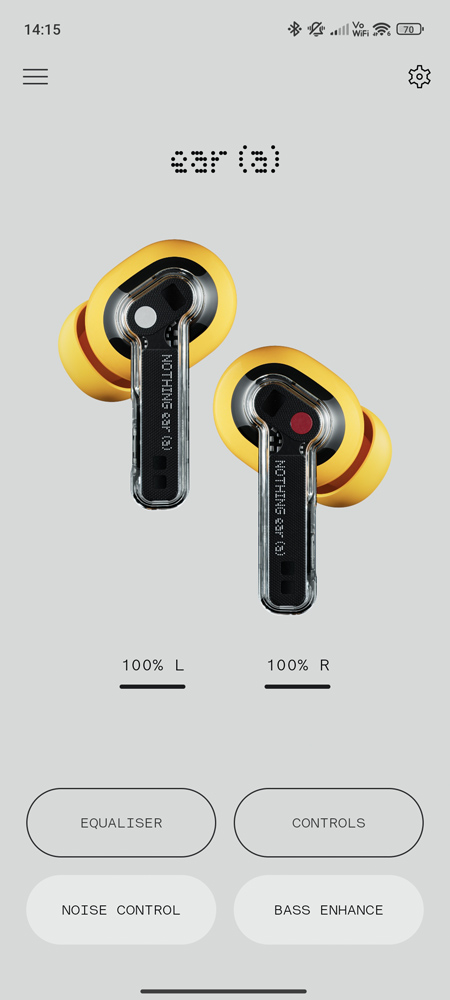
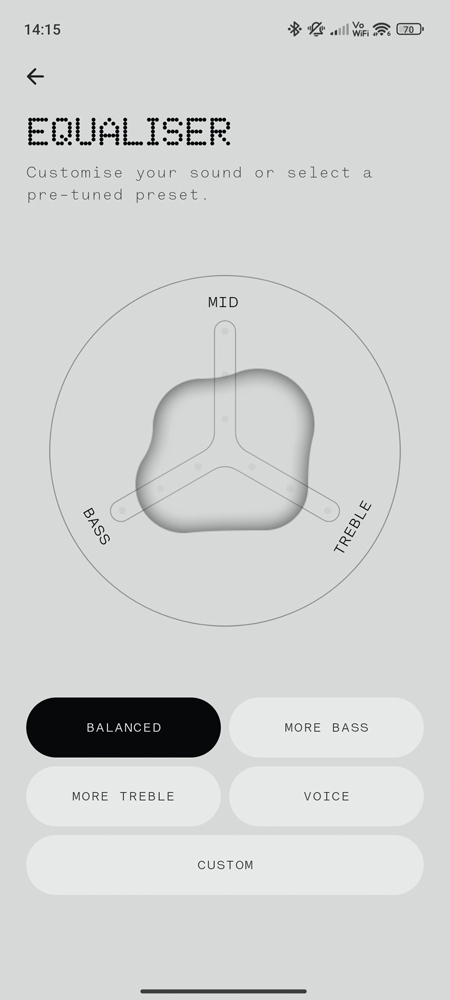
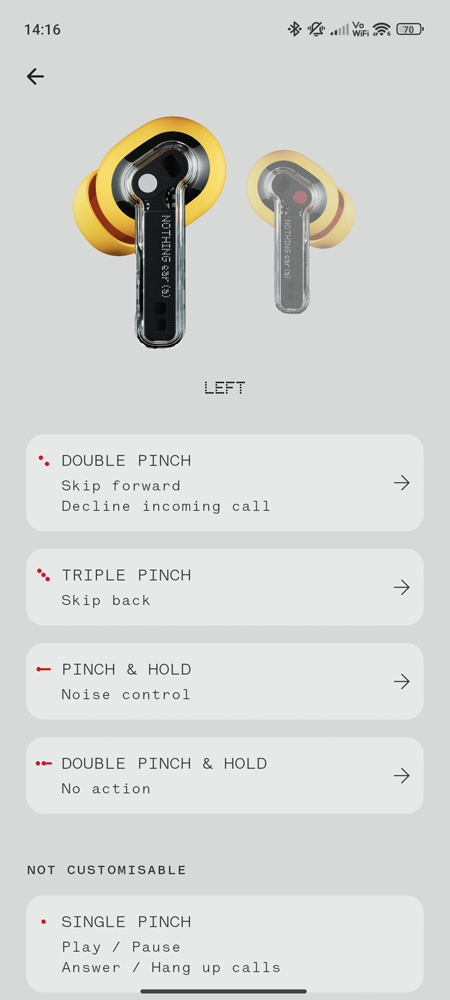
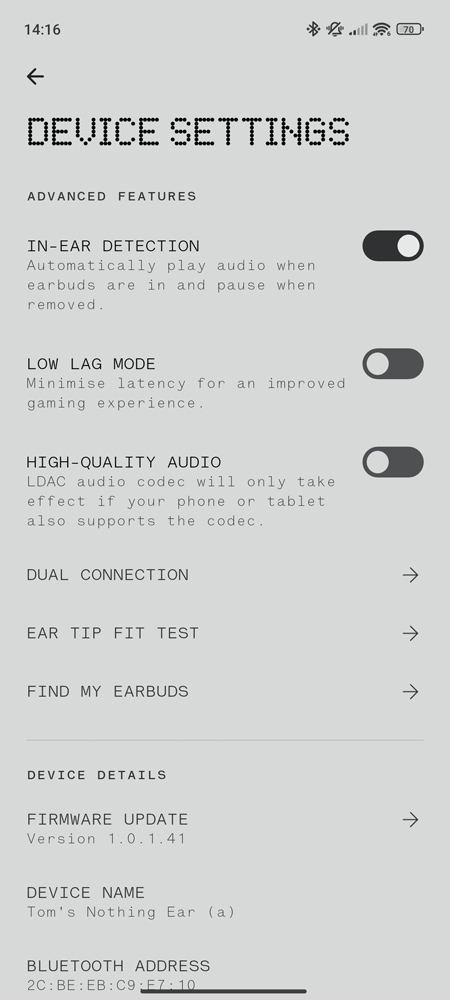
At first glance, the Nothing X companion app seems just as comprehensive for Ear (a) as it does for the regular Ear – but there are a few differences. The High Quality audio toggle is limited to LDAC here, as explained above; I don’t see it as a dealbreaker.
The pinch controls can still be fully customised, the various ANC modes toggled through, and useful settings enabled including Multipoint connectivity and low latency listening. Both worked perfectly in my testing, quickly swapping between laptop and smartphone and with a close enough audio/video sync to not be distracting when playing games.
The app can also install firmware updates, perform an ear fit test (which checks for a good sound seal using the built-in mics, rather than tests to see if the buds are secure), and plays tones through the buds if you ever misplace ’em. I also appreciated the clear battery percentages for the buds and case on the homescreen, as well as the useful Android widget that puts ANC modes within easy reach.
There’s no way to create a personal sound profile here, meaning any tone adjustment has to be done by ear alone. The equalizer is nowhere near as customisable, either, missing out on the Ear’s Advanced mode and its eight-band EQ. You can’t import profiles created by other users, either. This feels artificially limited to give people a reason to pay the extra for the Nothing Ear, almost as if the firm didn’t think the sound quality difference and addition of wireless charging were strong enough incentives by themselves.
Sound quality and noise cancelling: pipped at the post
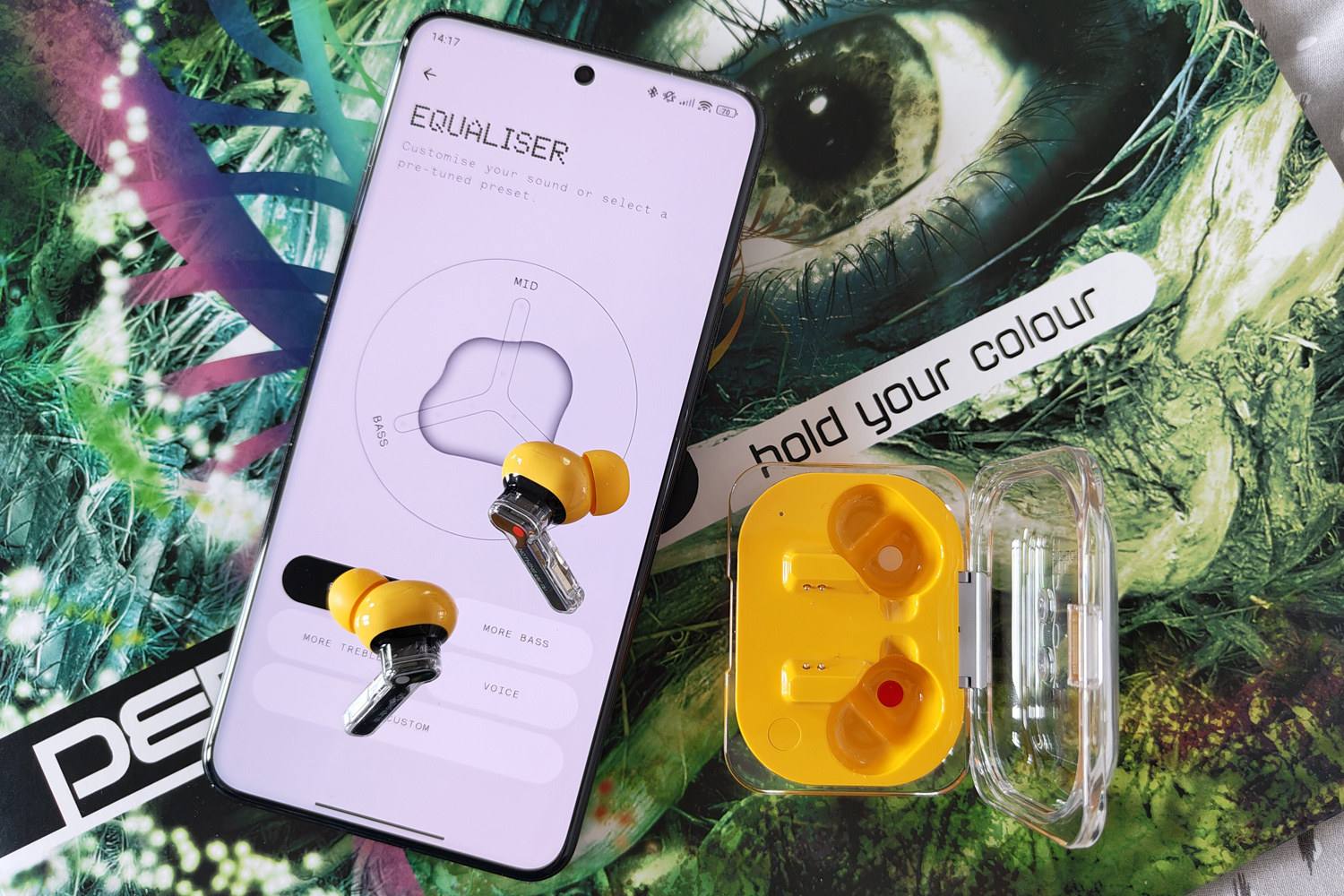
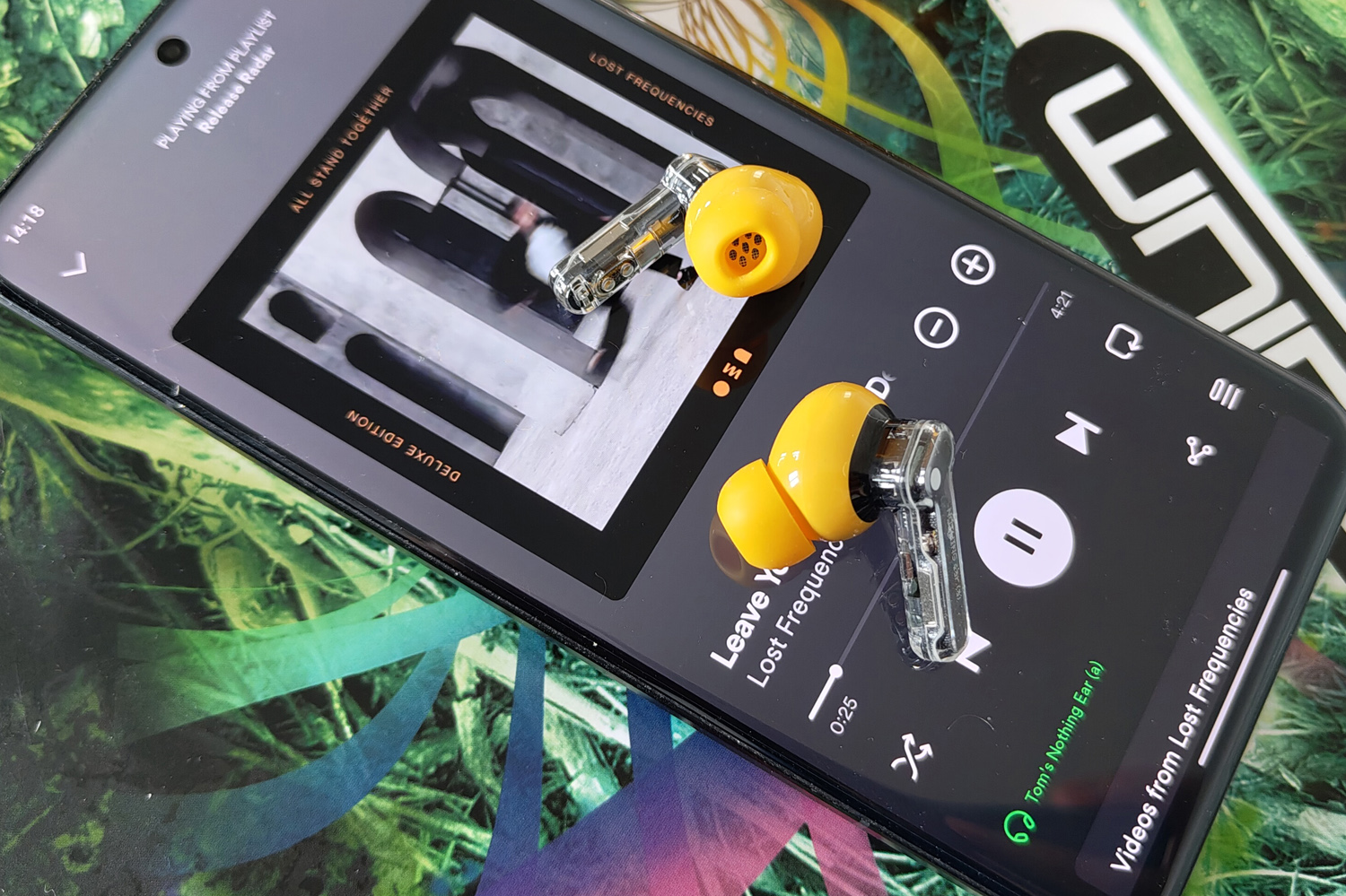
Rather than reuse the same driver from Ear 2, Nothing has gone with an all-new 11mm dynamic driver for Ear (a). It doesn’t have the ceramic diaphram found on the pricier Nothing Ear, so the high end lacks a little of that model’s crispness, but the firm’s tuning team have done a very good job everywhere else.
Understandably for a pair of £99 earbuds, Ear (a) has a fun sound signature that’s designed to appeal to the masses (serious audiophiles rarely get out of bed for headphones costing less than four figures these days). The tone curve isn’t as v-shaped as some, with bass and treble sharing more of an equal billing with the midrange. Mimi Webb’s vocals on Mistake are allowed to shine over the bassline, and aren’t overshadowed by the other instruments. The hi-hats on Beyonce’s Texas Hold ’em show great clarity, without stepping into sibilance or sharpness.
I found the lower frequencies sat further forward in the mix than the Cambridge Audio M100, which have a more analytical approach. Nothing’s Bass Enhance processing is turned on by default; it works reasonably well for most genres, but I thought some heavier electronic tracks sounded overly boomy. I switched it off and then dialled bass back in the custom EQ a notch or two for a more balanced presentation.
These are still affordable earbuds, so you shouldn’t expect the precision or engagement you’ll get from a much more expensive, but no matter your genre of choice, Ear (a) will be an enjoyable listen.
It’s a similar story with the active noise cancelling. As long as you weren’t holding out for them to dethrone the Sony WF-1000XM5 or Bose QuietComfort Ultra Earbud, you’ll be impressed with the Nothing’s ability to quieten the outside world. These earphones have the same 45dB cancellation as the Nothing Ear, which is a welcome improvement over Ear 2 and ideal for the office commute.
The adaptive setting is quick to adjust to loud and quiet spaces, with a fairly low noise floor that’s imperceptible when listening to music. Even when I was playing podcasts the hiss wasn’t very noticeable, and the ANC was still able to mute my fellow travellers.
Nothing Ear (a) verdict
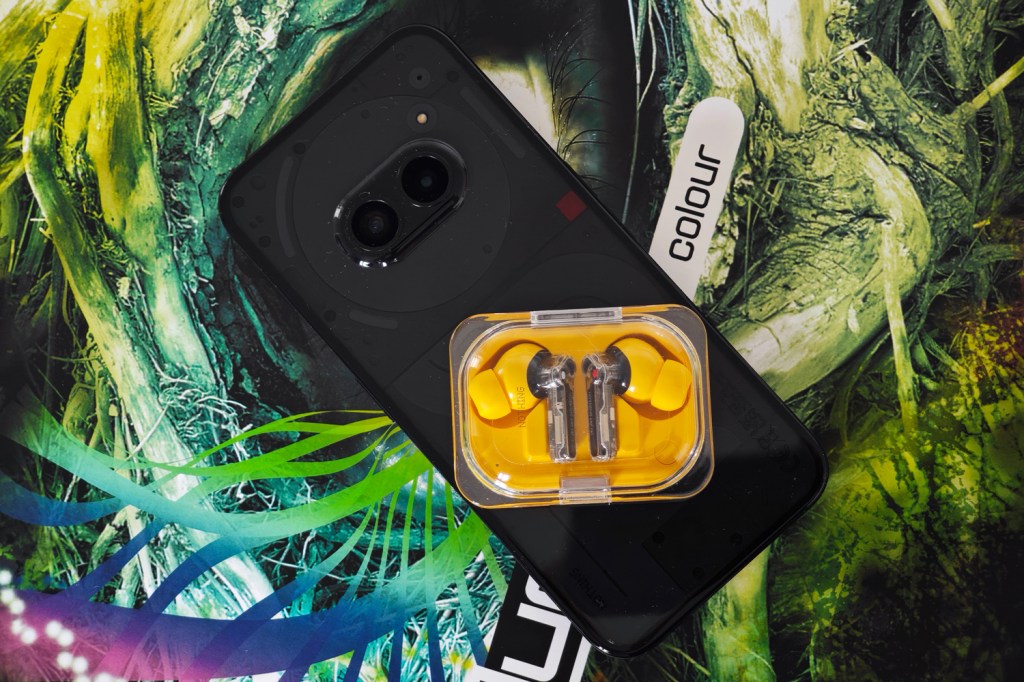
Equal parts fun and function, Ear (a) sees Nothing return to true bargain buds territory. They might give up a few features over the full-fat version, which is only a little more expensive, but making such capable ANC and enjoyable audio available for under £100 is a real achievement.
A lack of wireless charging can be forgiven at this price, as can missing LHDC support. I’d also argue the design is worth paying a premium for over the budget-minded CMF Buds Pro, especially in the new eye-catching yellow colourway. It’s a shame Nothing has kept the advanced EQ settings exclusive to the pricier Nothing Ear, but the more basic tools available here are still able to provide useful tuning tweaks.
If the styling hasn’t sold you, or you prefer buds to stem-style earphones, the Samsung Galaxy Buds FE and WF-C700N remain top picks. But anyone looking for Airpods alternatives will be very happy with a pair of these in their ears.
Stuff Says…
Takes the best bits of Nothing’s already affordable wireless earbuds and slashes the price even further. If you don’t need all the bells and whistles, Ear (a) is an absolute steal.
Pros
Very capable ANC and engaging audio
New twist on Nothing’s distinctive design
Consistently decent battery life
Cons
Missing advanced EQ settings
No wireless charging
Nothing Ear (a) technical specifications
| Drivers | 11mm dynamic |
| ANC | Yes |
| Bluetooth version | Bluetooth 5.3 |
| Codecs supported | SBC, AAC, LDAC |
| Durability | IP54 (buds) IPX2 (case) |
| Battery life | 5.5hrs/9.5hrs (buds, ANC on/off) 24.5hrs/42.5hrs (buds and case, ANC on/off) |
| Dimensions | 31x22x24mm, 4.8g (buds, each) 48x63x22.7mm, 39.6g (case) |


